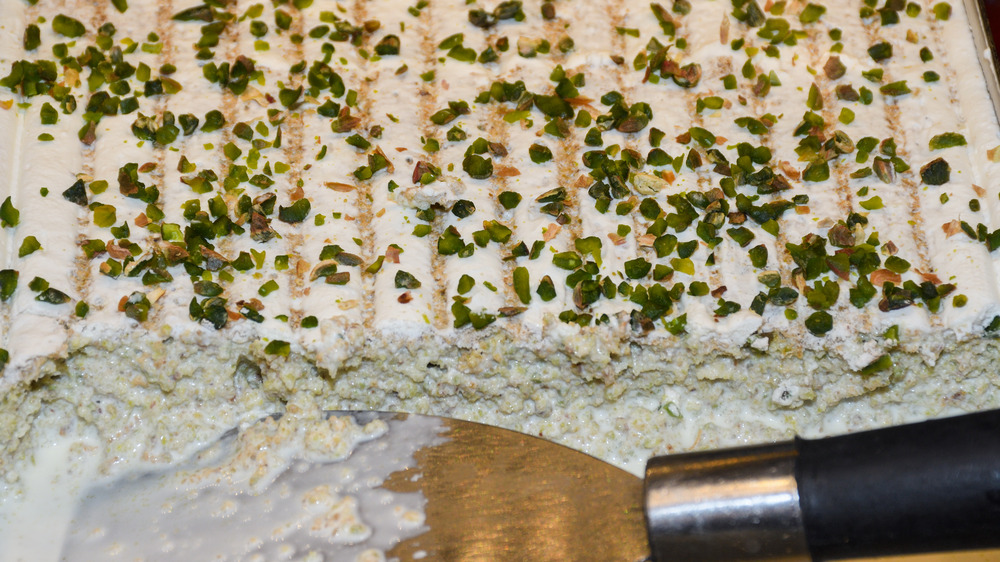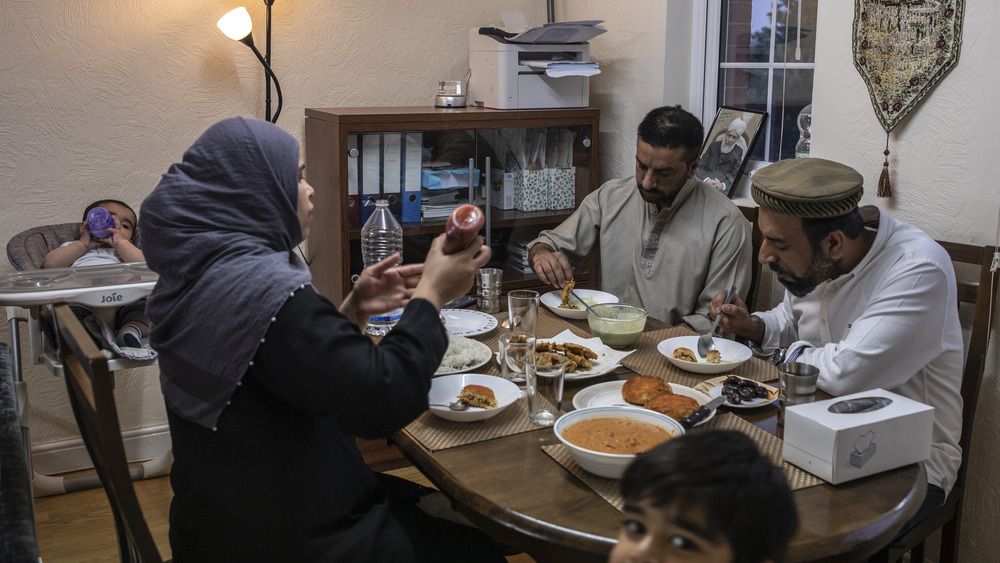What Is Güllaç And When Do You Eat It?
Depending on where in the world you live, the Islamic holy month of Ramadan begins on April 12 or 13 (via Al Jazeera). For people from Turkey, this is the month when the traditional baklava dessert takes a backseat to güllaç (via The Guide Istanbul).
Even in Turkey, it's hard to find güllaç any other time of year besides Ramadan. Imagine trying to order an eggnog latte outside the Thanksgiving and Christmas seasons in the United States.
What is güllaç, and why is it so appropriate for Ramadan? People who are vaguely familiar with Muslims' observance of Ramadan might only know that it is a month of fasting. More specifically, practicing Muslims are required to refrain from eating, drinking, tobacco, and sex, in order to heighten their consciousness of God. But the fast is only from sunrise to sunset. After sunset prayer, Muslims traditionally partake in a large, filling dinner called iftar. Güllaç is what's for dessert.
Güllaç is the perfect light dessert for Ramadan's evening feasts
We mentioned that güllaç replaces baklava during Ramadan as the staple Turkish dessert. The two confections are similar; both are made with phyllo dough (via The Guide Istanbul). Güllaç looks dramatically different – white rather than baklava's golden brown — because the dough is made with corn starch. While baklava contains pistachios, butter, and a sugar syrup made with lemon juice (via House of Nash Eats), güllaç incorporates nuts, milk, sugar, and rose water. The name "güllaç" translates to "food with rose."
Hazelnuts or pistachios are usually sprinkled in between the layers of white phyllo in güllaç. Fruit garnishes the Ramadan treat, too – cherries or pomegranate seeds, or whatever happens to be in season. Ramadan falls on the ninth month of the Islamic calendar but varies widely on the Gregorian calendar, which is followed in Christian countries. While Ramadan overlaps with April and May this year, in 2013 it fell in July and August (via NPR).
Güllaç is a fitting dish during Ramadan because it substitutes milk for the thick syrup in baklava. This makes for a much lighter dessert, something Muslims might have a little room for after their big iftar feast.

